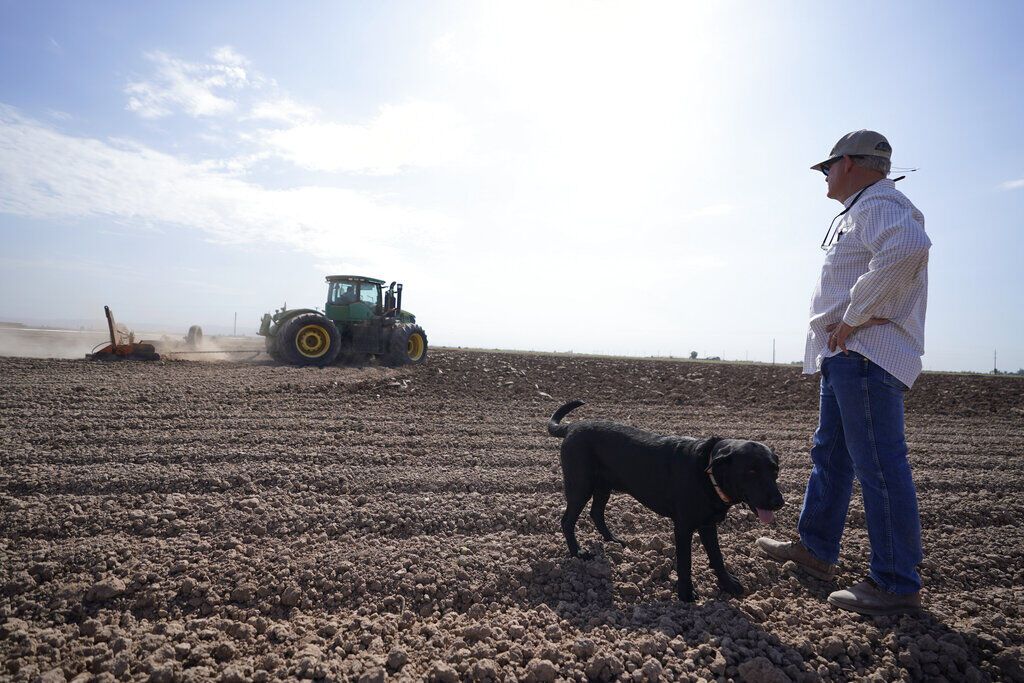Gujarat ATS busts Ricin plot in recent arrests: How ISIS has been experimenting with Ricin for years, and Jihadis across the world have been working on it for decades
On the 9th of November 2025, the Gujarat Anti-Terrorist Squad (ATS) arrested three men, including one Dr Ahmed Mohiyuddin Saiyed from Telangana, who had been researching how to make Ricin, which is banned internationally for its extreme toxicity. These jihadis are linked to the ISIS-affiliate Islamic State of Khorasan Province (ISKP). According to the ATS, Dr Saiyed, 35, who has a medical degree from China, worked under the instructions of a person named Abu Khadija, a resident of Afghanistan connected with the Islamic State Khorasan Province (ISKP). He was also in touch with several people from Pakistan. During interrogation, Saiyed confessed that he had been preparing to make Ricin, also known as “Ryzin,” a highly toxic substance made from castor beans. For this, he had arranged research materials, chemical equipment, and raw ingredients needed for the process. The ATS team, led by SP K Siddharth, caught Saiyed during a raid near Adalaj Toll Plaza on the Ahmedabad-Mehsana Road after receiving confidential information. He was driving a silver Ford Figo car in which officers found two Glock pistols, one Beretta pistol, 30 live cartridges, and about 4 litres of castor oil stored in a plastic container. Castor oil is the primary material used to make Ricin. The forensic scan of Saiyed’s devices helped the police track down two others: Azad Suleman Sheikh, 20, a tailor from Shamli in Uttar Pradesh, and Mohammad Suhail Mohammad Saleem Khan, 23, a student from Lakhimpur Kheri, Uttar Pradesh. They had helped Saiyed get the weapons and were working with him from Banaskantha in Gujarat. Both Islamic Jihadis, according to the ATS, shared extremist beliefs and had conducted reconnaissance at key locations in Lucknow, Delhi, and Ahmedabad as part of the planned attacks. Unsurprisingly, a Pakistan angle has also emerged in this case. The authorities say that the weapons recovered from the accused Islamic terrorists were received from Hanumangarh in Rajasthan, with their handler sending arms consignments by drones across the Pakistan border. The ATS seized three pistols, 30 live cartridges, and Ricin-related materials during the operation. Ricin, bioterror and the Jihadist obsession with poisons to kill Kafirs Ricin is a highly toxic protein which is derived from the castor bean plant or Ricinus communis. Ricin is not a virus or bacterium; rather, it is a lectin toxic to inhibits protein synthesis in cells. Its consumption can lead to organ failure and quick death. Extraction of Ricin involved mashing castor beans, removing the oil, and then chemically processing the remaining mash to isolate the Ricin-rich pulp. Although a sophisticated work, this process requires only basic lab equipment, gloves and acetone. The danger associated with Ricin can be understood from the fact that a mere 500 micrograms, which is less than the size of a grain of salt, can kill an adult if swallowed, inhaled or injected. The worst part is that there is no antidote. Those exposed to Ricin exhibit varying symptoms depending on the route of exposure. If ingested, the symptoms may include nausea, vomiting, diarrhoea, gastric haemorrhage, and shock. If injected, internal bleeding and tissue death and eventual collapse of major organ systems. If inhaled, Ricin will irritate the lung linings and airways, leading to weakness and fever, lesions in the lungs resulting in tissue swelling and more damage. In all cases, death and a very painful one at that, is almost certain within five to six days. The US Centers for Disease Control and Prevention (CDC) has classified Ricin as a category B bioterrorism agent. Ricin is also listed as a Schedule I toxic chemical under the Chemical Weapons Convention (CWC). The CDC describes Ricin as a “natural poison that can harm the body” through multiple routes, asserting its potential for mass exposure if aerosolised into mists, powders or contaminated food and water supplies. Ricin has been used for assassination and terror plots since the 1970s. The first reported use of Ricin for assassination was in 1978 to eliminate a Bulgarian dissident and journalist, Georgi Markov. An agent from the Bulgarian secret police shot a Ricin pellet into Markov’s leg from a modified umbrella at the Waterloo Bridge in London. Markov died within days after being shot. Islamic terrorist organisations have particularly eyed Ricin, considering it as a “poor man’s atomic bomb” since it’s a cheap but lethal means for asymmetric Jihad. Al Qaeda set up a lab to make Ricin in the early 2000s In the early 2000s, the Islamic terror group Al-Qaida turned to Ricin to carry out its jihadist agenda. Back in 2003, an Al-Qaida module had set up a lab to carry out attacks on the streets of the United Kingdom with Ricin and other poisons. The British authorities launched a counterterrorism operation and recovered 22 castor beans, equipment and a recipe for Ricin from an address in London. The authorities



On the 9th of November 2025, the Gujarat Anti-Terrorist Squad (ATS) arrested three men, including one Dr Ahmed Mohiyuddin Saiyed from Telangana, who had been researching how to make Ricin, which is banned internationally for its extreme toxicity. These jihadis are linked to the ISIS-affiliate Islamic State of Khorasan Province (ISKP).
According to the ATS, Dr Saiyed, 35, who has a medical degree from China, worked under the instructions of a person named Abu Khadija, a resident of Afghanistan connected with the Islamic State Khorasan Province (ISKP). He was also in touch with several people from Pakistan. During interrogation, Saiyed confessed that he had been preparing to make Ricin, also known as “Ryzin,” a highly toxic substance made from castor beans. For this, he had arranged research materials, chemical equipment, and raw ingredients needed for the process.

The ATS team, led by SP K Siddharth, caught Saiyed during a raid near Adalaj Toll Plaza on the Ahmedabad-Mehsana Road after receiving confidential information. He was driving a silver Ford Figo car in which officers found two Glock pistols, one Beretta pistol, 30 live cartridges, and about 4 litres of castor oil stored in a plastic container. Castor oil is the primary material used to make Ricin.
The forensic scan of Saiyed’s devices helped the police track down two others: Azad Suleman Sheikh, 20, a tailor from Shamli in Uttar Pradesh, and Mohammad Suhail Mohammad Saleem Khan, 23, a student from Lakhimpur Kheri, Uttar Pradesh. They had helped Saiyed get the weapons and were working with him from Banaskantha in Gujarat.
Both Islamic Jihadis, according to the ATS, shared extremist beliefs and had conducted reconnaissance at key locations in Lucknow, Delhi, and Ahmedabad as part of the planned attacks.
Unsurprisingly, a Pakistan angle has also emerged in this case. The authorities say that the weapons recovered from the accused Islamic terrorists were received from Hanumangarh in Rajasthan, with their handler sending arms consignments by drones across the Pakistan border. The ATS seized three pistols, 30 live cartridges, and Ricin-related materials during the operation.
Ricin, bioterror and the Jihadist obsession with poisons to kill Kafirs
Ricin is a highly toxic protein which is derived from the castor bean plant or Ricinus communis. Ricin is not a virus or bacterium; rather, it is a lectin toxic to inhibits protein synthesis in cells. Its consumption can lead to organ failure and quick death. Extraction of Ricin involved mashing castor beans, removing the oil, and then chemically processing the remaining mash to isolate the Ricin-rich pulp. Although a sophisticated work, this process requires only basic lab equipment, gloves and acetone.
The danger associated with Ricin can be understood from the fact that a mere 500 micrograms, which is less than the size of a grain of salt, can kill an adult if swallowed, inhaled or injected. The worst part is that there is no antidote.
Those exposed to Ricin exhibit varying symptoms depending on the route of exposure. If ingested, the symptoms may include nausea, vomiting, diarrhoea, gastric haemorrhage, and shock. If injected, internal bleeding and tissue death and eventual collapse of major organ systems. If inhaled, Ricin will irritate the lung linings and airways, leading to weakness and fever, lesions in the lungs resulting in tissue swelling and more damage. In all cases, death and a very painful one at that, is almost certain within five to six days.
The US Centers for Disease Control and Prevention (CDC) has classified Ricin as a category B bioterrorism agent. Ricin is also listed as a Schedule I toxic chemical under the Chemical Weapons Convention (CWC). The CDC describes Ricin as a “natural poison that can harm the body” through multiple routes, asserting its potential for mass exposure if aerosolised into mists, powders or contaminated food and water supplies.
Ricin has been used for assassination and terror plots since the 1970s. The first reported use of Ricin for assassination was in 1978 to eliminate a Bulgarian dissident and journalist, Georgi Markov. An agent from the Bulgarian secret police shot a Ricin pellet into Markov’s leg from a modified umbrella at the Waterloo Bridge in London. Markov died within days after being shot.
Islamic terrorist organisations have particularly eyed Ricin, considering it as a “poor man’s atomic bomb” since it’s a cheap but lethal means for asymmetric Jihad.
Al Qaeda set up a lab to make Ricin in the early 2000s
In the early 2000s, the Islamic terror group Al-Qaida turned to Ricin to carry out its jihadist agenda. Back in 2003, an Al-Qaida module had set up a lab to carry out attacks on the streets of the United Kingdom with Ricin and other poisons. The British authorities launched a counterterrorism operation and recovered 22 castor beans, equipment and a recipe for Ricin from an address in London. The authorities arrested six Algerian men. Later, an Algerian national, Kamel Bourgass, was sentenced to 17 years in prison for “conspiracy to cause a public nuisance by the use of poisons and/or explosives to cause disruption, fear or injury.”
In his 5th February 2003 speech to the United Nations, then US Secretary of State Colin Powell linked this incident to the Abu Musab al-Zarqawi global terrorist network. By 2004, Zarqawi’s Al-Qaeda in Iraq (AQI), the precursor of ISIS, experimented with Ricin in Fallujah labs; their tests also involved cyanide, etc.
In 2003, it happened twice between October and November that two Ricin-laced letters were found. One of the letters was mailed to White House; it was, however, intercepted at a processing facility.
In a separate incident that year, the US coalition forces captured a chemical weapons facility in northeastern Iraq’s Khurmul and found traces of Ricin and other poisons. In the early 2000s, the US coalition forces found numerous chemical weapons laboratories operated by the Islamic State (ISIS) and other Islamic terror outfits in Iraq and Syria. ISIS is reported to have captured stockpiles from Saddam-era sites and tested toxins on captives, including Ricin derivatives, for terror attacks and executions.
ISIS tested on Ricin during their rule
As per the UN, ISIL/ISIS developed eight chemical agents, tested them on humans and animals, and carried out at least 13 attacks during its four-year reign. These chemical agents included aluminium phosphide, botulinum toxin, chlorine, cyanide ion, nicotine, ricin, thallium sulphate and sulphur mustard or mustard gas. The ISIS used these chemicals banned by the Chemical Weapons Convention (CWC) for mortars, rockets and IEDs. The use of chemical weapons was approved by then-ISIS head Abu Bakr al-Baghdadi.
The ISIS’s use of chemical agents for terrorist attacks is studied in three phases. During the first phase (between June 2014 and June 2015), the Jihadis relied on tried and tested techniques and available industrial chemicals like chlorine and phosphine. The intent was mostly to create crude improvised explosive devices (IEDs). ISIS’s propaganda magazine, Dabiq, and Rumiyah were continuously promoting ‘Poison Jihad’ and encouraged lone-wolf Jihadis to use readily available materials for carrying out mass casualty attacks. The Islamic terror group encouraged unconventional methods such as chemical, biological, radiological, and nuclear (CBRN) materials.
In the second phase (June 2015 to January 2017), the ISIS Jihadis had developed enhanced capabilities by combining the production of sulphur mustard agent with the means to deliver it using projectiles, like mortar bombs and improvised rockets. In this phase, chemical attacks were carried out simultaneously across the caliphate, from Aleppo province in Syria in the west to Iraq’s Kirkuk province in the east. These attacks increased significantly in April 2016, with around 8 incidents in that month. In total, ISIS used chemical weapons in over 37 separate terror attacks in Syria and Iraq. In at least 20 cases, they used chlorine.
During the third phase, there was a last recorded chemical attack in Syria on 8th January 2017. The chemical attacks menace ended with the Islamic State’s apparent discontinuation of its chemical weapons production following the loss of Mosul in July 2017.
In May 2016, the Kenyan and Ugandan law enforcement agencies arrested two ISIS-linked men named Ahmed Hish and Farah Dagane. These Jihadis were planning a terror attack using the lethal Anthrax.
Notably, Anthrax has also been used by terrorists to carry out attacks. One of the first known uses of Anthrax to kill people was the September 2001 Amerithrax case, wherein Anthrax-laced letters were mailed to various media offices and two senators, Tom Daschle and Patrick Leahy. In this case, over seventeen people were injured, while five were killed.
In 2017, the ISIS Jihadis reportedly ordered the construction of a chemical dispersal device in Sydney. Back then, a 40-year-old man named Khaled Merhi and three others were arrested by Australian Police in an alleged plot to blow up a passenger flight. He was later charged with possession of a prohibited weapon. Khaled and his brother, Mahmoud Khayat, were both charged with plotting the attack.
Back in 2011, it was reported that Al-Qaida was trying to produce Ricin poison to carry out multiple attacks in the United States.
Notably, letters laced with Ricin were once intercepted en route to former US Presidents Barack Obama in 2013 and Donald Trump in 2020 before reaching them.
In February 2015, a 31-year-old software programmer from Liverpool in the UK named Mohammed Ali was jailed for eight years after he was found trying to purchase Ricin from the Darknet. Going by the online moniker “Weirdos 0000”, Ali approached a supplier “Psychochem”, on the Darknet to negotiate the price of Ricin. Ali made a payment in bitcoins for 500 mg of Ricin powder. This quantity was enough to kill 700 to 1400 people. It, however, turned out that the vendor was an FBI agent, who informed the UK Police. Although it could not be established that Mohammed Ali was planning a terror attack, he was sentenced to eight years in jail considering the risks of possessing a lethal poison.
From trucks to toxins, ISIS propaganda machinery encouraged Islamic Jihadist lone wolves to carry out vehicular attacks involving trucks or other vehicle-ramming to kill people.
The 2016 Nice attack carried out by a Tunisian national living in France named Mohamed Lahouaiej-Bouhlel, wherein over 86 people died, the 2016 Berlin attack carried out by a Tunisian national Anis Amri, which claimed 12 lives, the London Bridge Islamic terror attack, carried out by Pakistani-British national Khurram Butt, Rachid Redouane (Moroccan) and Youssef Zaghba (Italian) that killed 8, and the New York attack in 2017, carried out by Sayfullo Saipov (from Uzbekistan) that claimed 8 lives are just a few of the many vehicular attacks that have been carried out Similarly, the Jihadist outfits promoted and glorified toxin-based attacks.
Notably, the 2018 Cologne plot was the pinnacle of bioterrorism, wherein a Tunisian migrant, Seif Allah H., an ardent ISIS jihadist, produced 84 milligrams of impure ricin in his apartment in Germany’s Cologne. He planned to smear it on door handles or inject it via syringes. In the latter half of 2017, Seif attempted to travel to Syria twice to join the Islamic State; however, he was stopped in Turkey. Seif’s missing Tunisian passport brought him under the radar of the German counterterrorism forces, and in 2018, the British intelligence agency informed German authorities about suspicious online shopping activities by a Tunisian living in Germany. Seif’s wife, Yasmin, was also aware of his jihadist proclivities.
In June 2018, Seif Allah H. was arrested, although by then, he had already produced 84.03 milligrams of Ricin and stored 3,150 castor beans.
In October 2024, 18-year-old accused Axel Rudakubana was charged with three murders and ten cases of attempted murder after a violent stabbing at a Taylor Swift-themed dance class in Southport, England. The UK police searched Rudakubana’s residence and reportedly uncovered a PDF titled ‘Military Studies in the Jihad Against the Tyrants: The Al-Qaeda Training Manual,’ which prompted the terror-related charge. Authorities also allege that Rudakubana produced the deadly toxin ricin, resulting in an additional charge for creating a biological weapon.
India’s crackdown on ISIS has continued since 2014: Conventional weapons and Jihadist drivers are old, the Ricin bioterror plot adds a new layer
From busting the 2016 Kerala module, probing the 2019 Sri Lanka Easter bombings’ India links, 2022 Bihar terror module, 2023 Pune ISIS terror module, 2025 multi-state operations to nab jihadist planning terror attacks in Pune, Jammu and Kashmir, and Delhi, 2024 Lashkar-e-Taiba terror module in Bengaluru to the ISIS-linked terror module in Delhi, the National Investigation Agency (NIA) and the Anti-Terrorism Squads in each state have been arresting ISIS and other Islamic terror outfit-linked Jihadis and busting terror modules. The Indian agencies have been dismantling the recruitment and financial network of various Islamic terror groups, trying to deepen their roots in India.
However, the sinister biological warfare (bio war) or bioterrorism plot busted by Gujarat ATS is a concerning exposé. After IEDs, shootings, bomb blasts and Islamic radicalisation, India faces the ‘toxic threat’. Reports stated that the ISIS-linked jihadists arrested had prepared to use Ricin as part of their plan to cause mass casualties. For this, these terrorists were surveying crowded food markets and supply chains in Gujarat and other states as potential targets for attacks. The Jihadis planned to poison public food supplies to cause mass killings, as per reports.
While the security agencies remain vigilant and are investigating the Ricin bioterror plot, such cases cannot be dismissed as isolated incidents or mischief or stupidity by ‘Bhatke huye naujawan’ (misled Muslim youth); rather, the busting of the bioterrorism plot should be an eye-opener for the nation to understand the many unique threats it faces from Islamic terrorists.
These Jihadis are highly radicalised, Hoor-seeking terrorists, schooled in encrypted networks, trained to use science technology to make weapons for killing innocent people merely for not following the religion they follow, and are backed by well-oiled jihadi ecosystems.
Although conventional explosives or firearms are never going out of fashion for jihadists, in an era of asymmetric warfare, chemical weapons offer a blend of accessibility and terror amplification. Chemicals like Ricin or Sarin can be synthesised from everyday precursors, such as industrial solvents or castor beans, in basic labs, which would be convenient for lone wolves or small terrorist cells.
The cost-effectiveness, the lesser need for a large-scale infrastructure, and lower chances of being caught make it a preferable option. Preferability increases the probability frequency, making Racin-laced plots or any other form of bio-war a real, though silent, scalable and perfectly suited for killing a large number of people (read non-Muslims).







































































